RuncoCare™ Standard Two Year Limited Warranty
Important Safety Instructions
Compliance Information
1. Introduction
1.1 About This Manual
Target Audience
If You Have Comments About This Manual...
Textual and Graphic Conventions
Text Conventions
Graphic Conventions
1.2 Using This Manual
1.3 Description, Features and Benefits
Key Features and Benefits
Parts List
Optional Accessories
2. Controls and Functions
2.1 Q-750i at a Glance
Figure 2-1 . Q-750i Front/Side/Top View
2.2 Q-750i Rear Panel
Figure 2-2 . Q-750i Rear Panel
2.3 Q-750i Remote Control
Figure 2-3 . Q-750i Remote Control
3. Installation
3.1 Remote Control
Notes on Batteries
Notes on Remote Control Operation
3.2 Quick Setup
Table 3-1 . Installation Overview
3.3 Installation Considerations
Installation Type
Table 3-2 . Projector Installation Options
Ambient Light
Throw Distance
Figure 3-1 . Estimating Throw Distance
Table 3-3 . Throw Ratios for the Q-750i Series
Vertical and Horizontal Position
Figure 3-2 . Projector Placement
Vertical and Horizontal Lens Shift
Figure 3-3 . Vertical Lens Shift (Example Only)
Vertical Lens Shift (Standard Q-750i)
Vertical Lens Shift (Q-750i/CineWide or Q-750i/CineWide with AutoScope)
Horizontal Lens Shift
Figure 3-4 . Horizontal Lens Shift (Example Only)
Folded Optics
Figure 3-5 . Folded Optics
Other Considerations
3.4 Installing the Optional CineWide/AutoScope Lens Mount
Installing the AutoScope Lens Motor
Figure 3-6 . Q-750i/CineWide with AutoScope Motor Assembly
Remove Projector Front Feet
Install Ceiling Mount Adapters/Projector Stands
Figure 3-7 . Q750i with Ceiling Mount Adapters/Projector Stands
Install Lens Motor
Figure 3-8 . AutoScope Lens Motor Installation
Installing the Fixed CineWide Base Plate
Figure 3-9 . Q-750i/CineWide with Rainier II/McKinley (Cylindrical) Lens Base Plate - Exploded View
3.5 Mounting the Q-750i
Floor Mounting (Upright)
Ceiling Mounting (Inverted)
Adjusting the Projector Height or Projection Angle
3.6 Connections to the Q-750i
Connector Panel Access
Connecting Source Components to the Q-750i
HDMI/DVI Connections
Figure 3-10 . HDMI/DVI Source Connections
RGB Connections
Figure 3-11 . RGB Connections
Component Video Connections
Figure 3-12 . Component Video Connections
Composite/S-Video Connections
Figure 3-13 . Composite and S-Video Connections
RS-232 Controller Connection
Figure 3-14 . RS-232 Control System Connection
Connecting 12-Volt Trigger Output to External Theater Equipment
Figure 3-15 . Connecting 12-Volt Trigger Outputs
Connecting an External IR Receiver
Figure 3-16 . External IR Receiver Connection
Connecting to AC Power
Projector
AutoScope Lens Motor
3.7 Turning on the Power
3.8 Primary Lens Adjustments
Focus and Zoom
Lens Shift
Vertical Lens Shift
Horizontal Lens Shift
3.9 Changing the OSD Language
3.10 Adjusting the Picture Orientation
Rear Projection
Ceiling Mode
3.11 Installing and Adjusting the CineWide Anamorphic Lens
Figure 3-17 . Anamorphic Lens Mounting Assembly - Exploded View
Attaching Lens Mounting Assembly to Lens Motor Carriage Plate or Fixed CineWide Base Plate
Figure 3-18 . Attaching the Anamorphic Lens to the Lens Ring
Select the Appropriate CineWide Scaling Method
Configure Lens Motor Trigger (Q-750i/CineWide with AutoScope only)
Adjusting the Horizontal (X) Lens Position
Adjusting the Height (Y)
Adjusting the Pitch (Angle)
Adjusting the Yaw
Geometry
Focus
4. Operation
4.1 Selecting An Input Source
4.2 Using Picture-In-Picture (PIP)
Table 4-1 . Available Main and PIP Source Combinations
4.3 Using the On-Screen Menus
Figure 4-1 . Q-750i OSD Menu Structure
Main
Figure 4-2 . Q-750i Main Menu
Aspect Ratio
Table 4-2 . Aspect Ratio Settings
Memory
Brightness
Figure 4-3 . Typical PLUGE Pattern for Adjusting Brightness
Contrast
Figure 4-4 . Typical Gray Bar Pattern for Adjusting Contrast
Color
Tint
Sharpness
Figure 4-5 . Typical Test Pattern for Adjusting Sharpness
Noise Reduction
Overscan
Figure 4-6 . Overscan Examples
Input Select
Figure 4-7 . Input Select Sub-Menu
PIP Select
Resync
Advanced
Figure 4-8 . Q-750i Advanced Menu
Color Space
Video Standard
Gamma
Color Temperature
DLP Frame Rate
Color Gamut
Table 4-3 . x/y Color Gamut Values
SatCo
ConstantContrast
Adaptive Contrast
RGB Adjust
Figure 4-9 . RGB Adjust Sub-Menu
Fine Sync
Figure 4-10 . Fine Sync Sub-Menu
PCE
Figure 4-11 . PCE Sub-Menu
Hue/Saturation/Level
Figure 4-12 . CIE 1931 Color Coordinate Diagram and Effect of PCE Hue and Saturation Controls
RSC™ (Runco Smart Color)
White Balance
System
Figure 4-13 . Q-750i System Menu
Input Enable
Figure 4-14 . Input Enable Sub-Menu
PIP Position
Figure 4-15 . PIP and PBP areas for 1080p Display
Figure 4-16 . PIP Split-Screen Mode
Menu Position
Translucent Menu
Blank Screen
Auto Power Off
Auto Power On
Rear Projection
Ceiling Mode
Logo Display
Power On Chime
Control
HD 1 Key / HD 2 Key / HD 3 Key
CineWide
Trigger 1
Trigger 2
Language
Service
Figure 4-17 . Q-750i Service Menu
Factory Reset
Blue Only
Test Patterns
Altitude
5. Maintenance and Troubleshooting
5.1 Troubleshooting Tips
Table 5-1 . Troubleshooting Chart
6. Serial Communications
6.1 RS-232 Connection and Port Configuration
6.2 Serial Command Syntax
Key Commands
Table 6-1 . Serial Command Key Names and IR Codes
Operations Commands
Table 6-2 . Serial Commands
RS-232 Error Codes
Table 6-3 . RS-232 Error Codes
7. Specifications
7.1 Q-750i Specifications
Table 7-1 . Q-750i Specifications
7.2 Overall Dimensions - Q-750i
Figure 7-1 . Overall Dimensions - Q-750i
7.3 Overall Dimensions - Q-750i/CineWide with AutoScope
Figure 7-2 . Overall Dimensions - Q-750i/CineWide with AutoScope
7.4 Supported Timings
Table 7-2 . Supported Signal Timings by Input
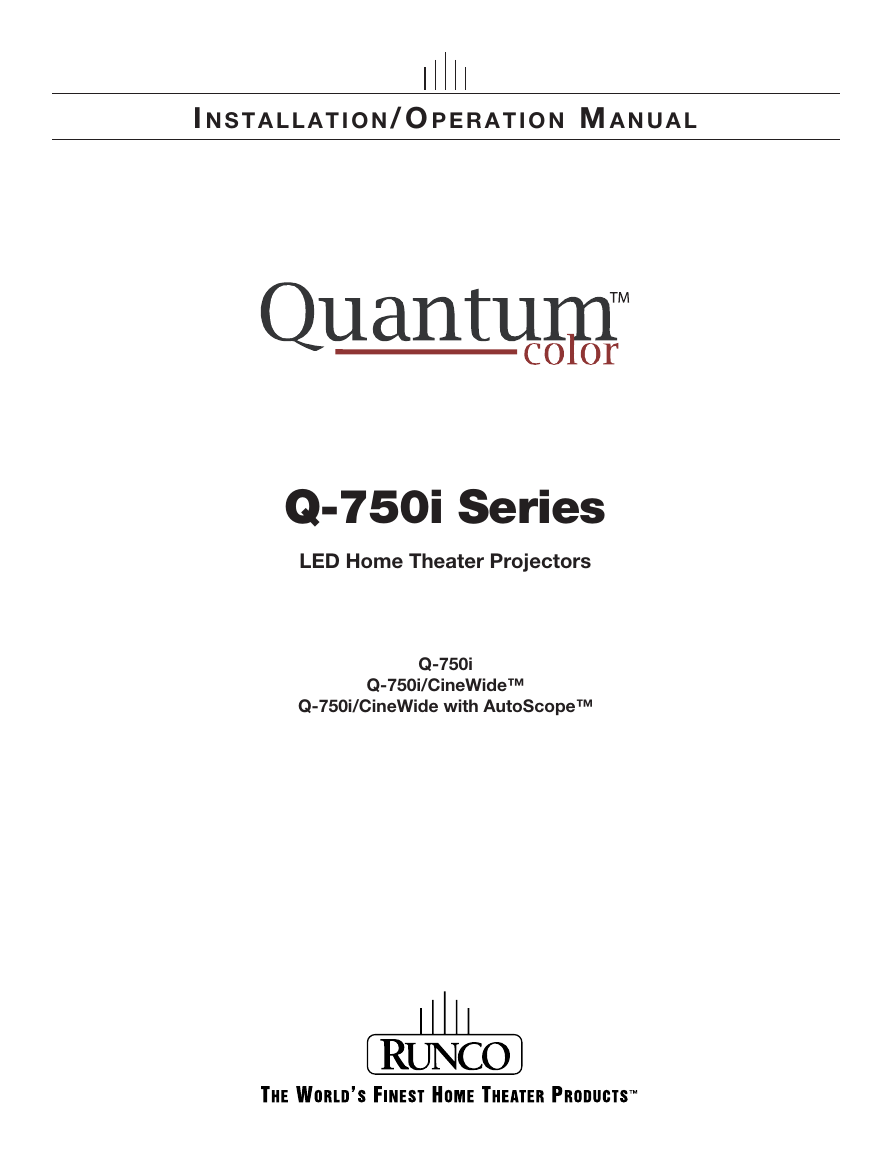



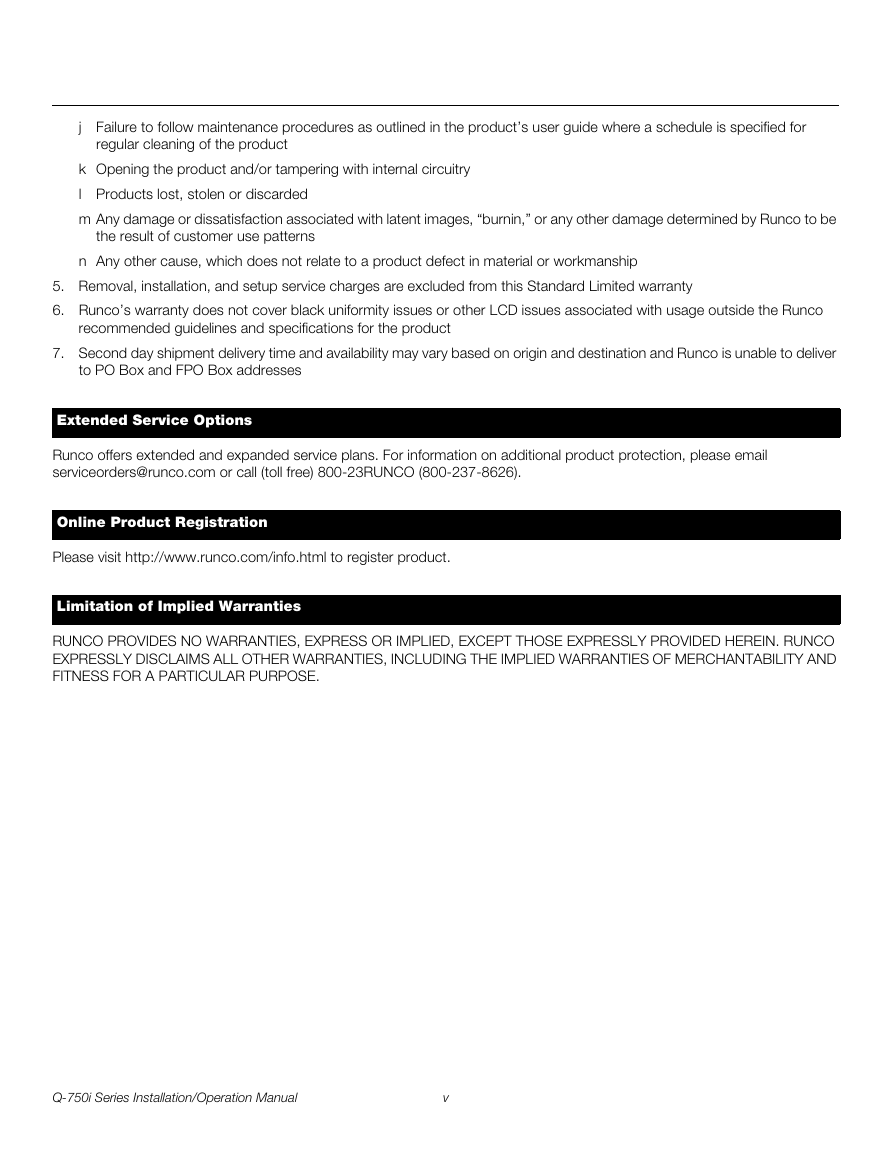
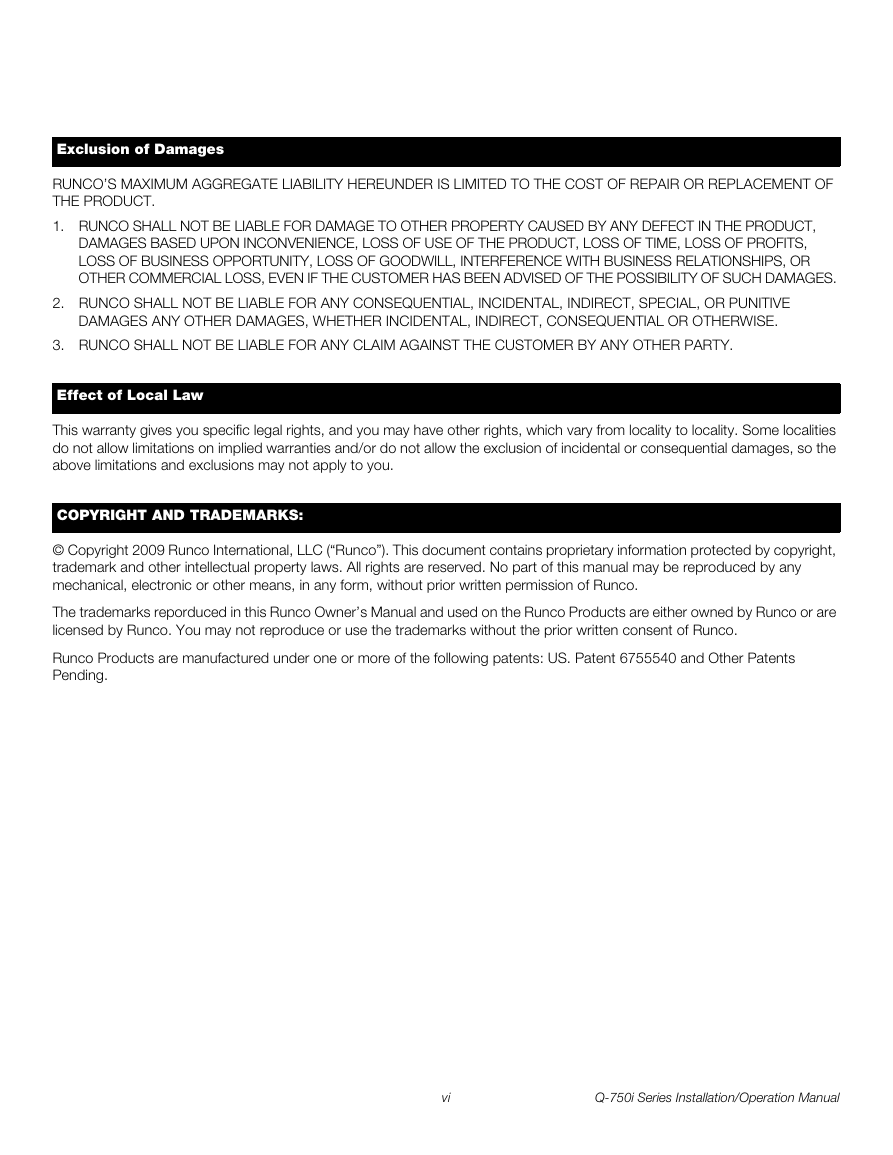
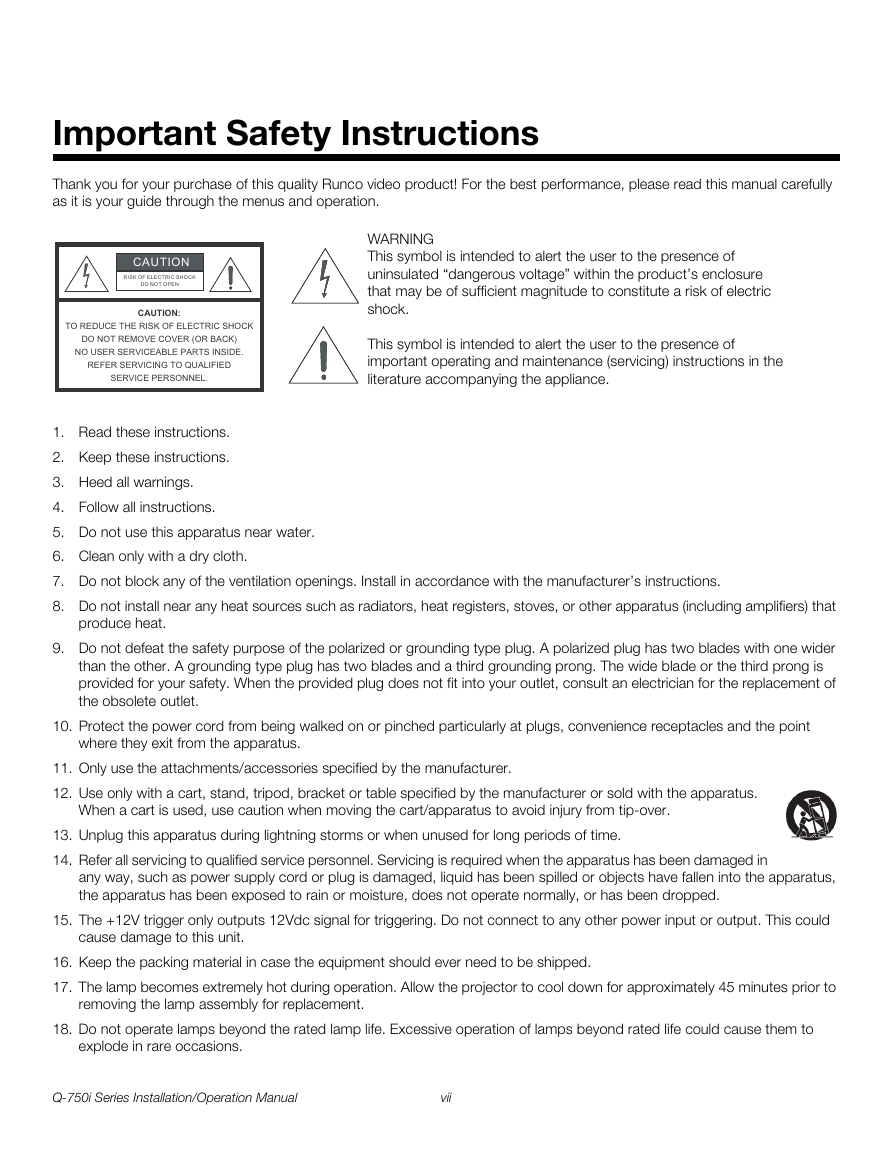
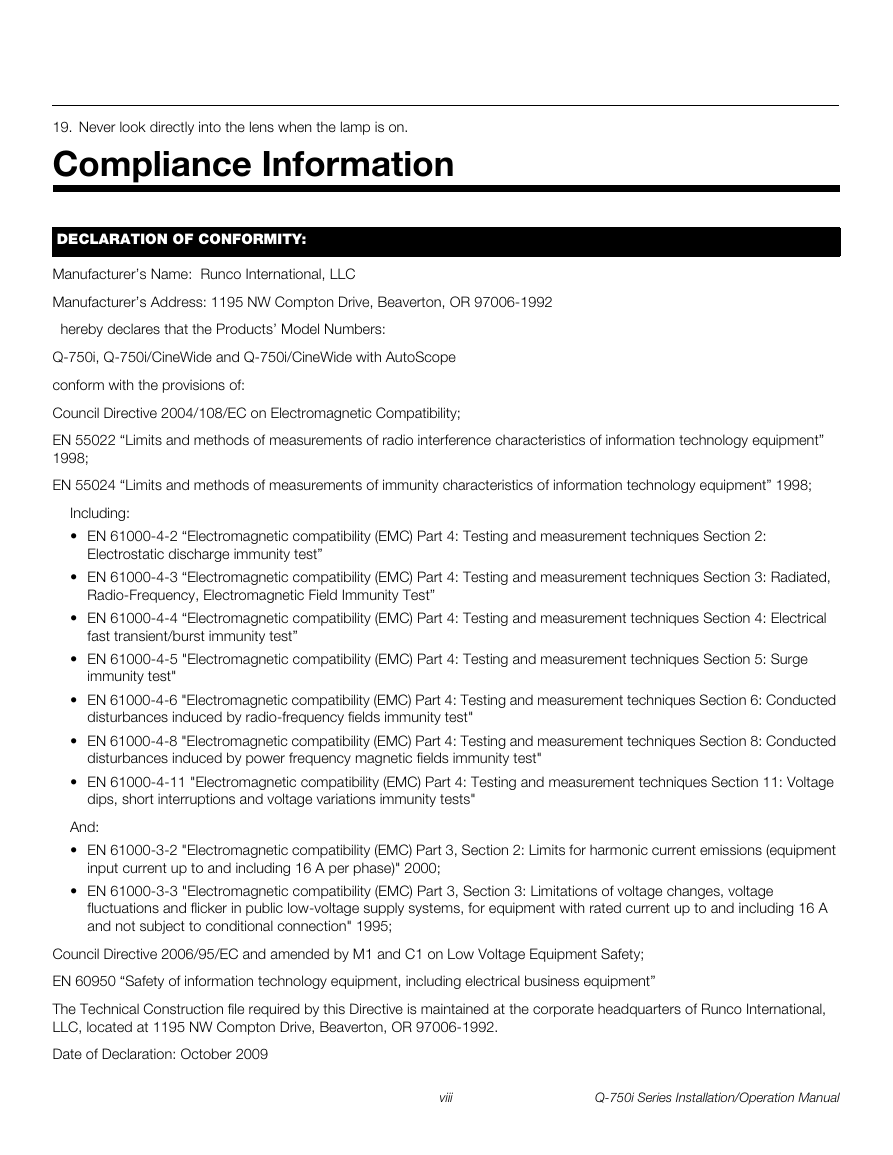








 2023年江西萍乡中考道德与法治真题及答案.doc
2023年江西萍乡中考道德与法治真题及答案.doc 2012年重庆南川中考生物真题及答案.doc
2012年重庆南川中考生物真题及答案.doc 2013年江西师范大学地理学综合及文艺理论基础考研真题.doc
2013年江西师范大学地理学综合及文艺理论基础考研真题.doc 2020年四川甘孜小升初语文真题及答案I卷.doc
2020年四川甘孜小升初语文真题及答案I卷.doc 2020年注册岩土工程师专业基础考试真题及答案.doc
2020年注册岩土工程师专业基础考试真题及答案.doc 2023-2024学年福建省厦门市九年级上学期数学月考试题及答案.doc
2023-2024学年福建省厦门市九年级上学期数学月考试题及答案.doc 2021-2022学年辽宁省沈阳市大东区九年级上学期语文期末试题及答案.doc
2021-2022学年辽宁省沈阳市大东区九年级上学期语文期末试题及答案.doc 2022-2023学年北京东城区初三第一学期物理期末试卷及答案.doc
2022-2023学年北京东城区初三第一学期物理期末试卷及答案.doc 2018上半年江西教师资格初中地理学科知识与教学能力真题及答案.doc
2018上半年江西教师资格初中地理学科知识与教学能力真题及答案.doc 2012年河北国家公务员申论考试真题及答案-省级.doc
2012年河北国家公务员申论考试真题及答案-省级.doc 2020-2021学年江苏省扬州市江都区邵樊片九年级上学期数学第一次质量检测试题及答案.doc
2020-2021学年江苏省扬州市江都区邵樊片九年级上学期数学第一次质量检测试题及答案.doc 2022下半年黑龙江教师资格证中学综合素质真题及答案.doc
2022下半年黑龙江教师资格证中学综合素质真题及答案.doc